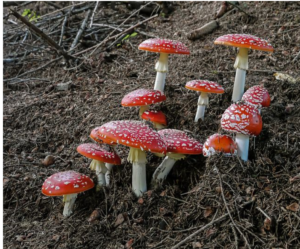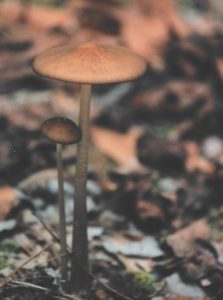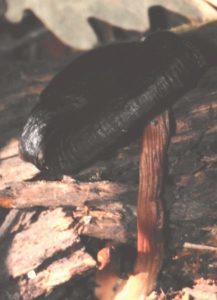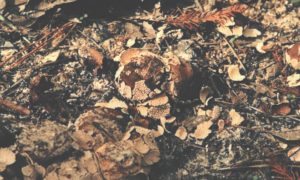Join Teri MacArthur for one of her Fall Mushroom Walk & Talks. Pick from one of two dates:
Fall Mushroom Hunting
Soon those crisper days of Fall will arrive, bringing some of nature’s most mysterious offerings – mushrooms! Yes, fungi are found year round, but fall offers us some of the real beauties to feast our eyes on. Colorful sightings along the pathways and trails are more common this time of year. But what are those mysterious mushrooms up to all day out there in nature?
In our climate, summertime can be hard on vegetation. You can almost hear the trees sigh with relief when cooler weather arrives. They begin losing leaves and taking a well-deserved break. All those dead leaves hold the very nutrients that trees need to grow strong and healthy, and now they’re on the ground! Here’s where our fungal friends the mushrooms come in, acting as saprophytes that decompose, and/or mycorrhizae connecting the vegetation for nutrient-sharing. Let’s go on a little hunt
and see some in action!
One of the favorites of artists and photographers alike is Amanita muscaria – a deadly but beautiful mushroom that networks mainly with pines and other conifers. As with other fungi you may find, it spreads through the soil to connect trees for nutrient sharing.
Look for this graceful mushroom with the unpronounceable name on the forest floor. It’s one of the hardest working decomposers out there, quickly breaking down dead materials into the soil and releasing the nutrients that trees re-use, again and again. Its name is Oudemansiella radicata.
Other interesting finds are the Ganoderma species. Though it’s not an edible mushroom, they are highly prized in some cultures
as myco-medicinals. Specimens are dried, ground, and steeped as a tea thought to treat anything from stomach pain to some cancers. It’s another great decomposer.
Finally, when you see this messy mushroom that almost looks like broken eggs on the ground, you have found one of the Scleroderma species. It’s highly toxic if consumed, but helps move nutrients around in mixed pine and hardwood forests.
Take a walk and take a look. You will discover Fall’s beautiful and hardworking fungi. But don’t touch! Some are beautiful but deadly if eaten. Take photographs only and remember to check your field guides to help you identify what you see.
Suggested Field Guides: A Field Guide to Texas Mushrooms, Susan & Van Metzler, UofT Press
Mushrooms Demystified, David Arora, Ten Speed Press/Berkeley
Written by Teri MacArthur






